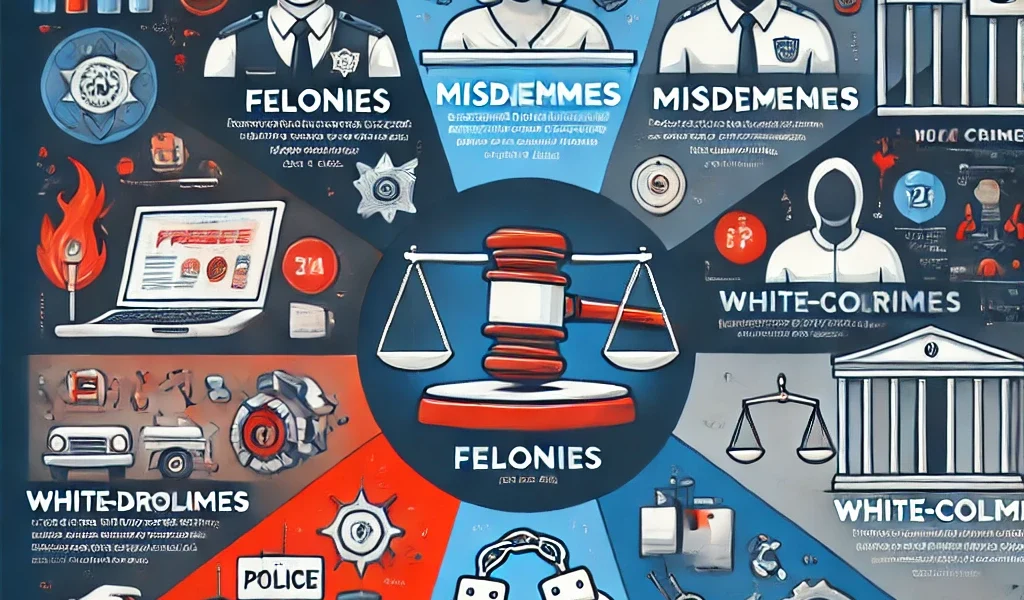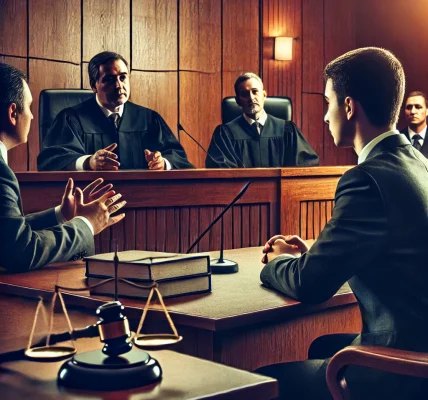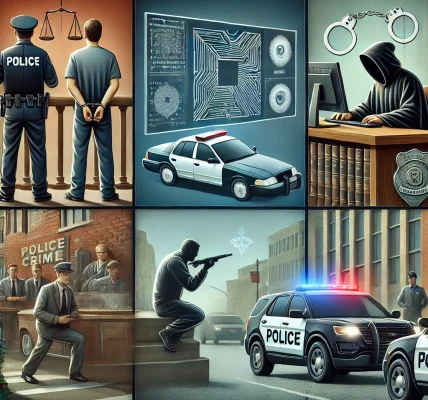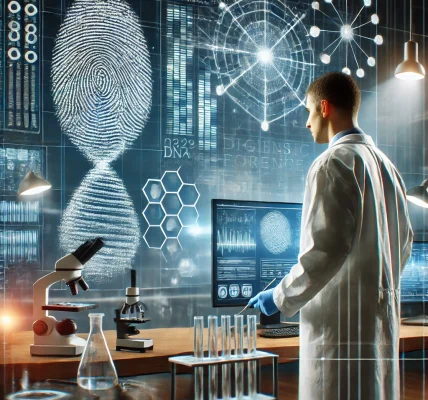Criminal law is a crucial aspect of any legal system, ensuring justice, maintaining public order, and deterring criminal activities. Understanding the different types of criminal offenses and their legal consequences is essential for legal professionals, policymakers, and the general public. This comprehensive guide explores various categories of crimes, their classifications, and the penalties associated with them.
Understanding Criminal Offenses
Criminal offenses refer to acts committed in violation of the law that are punishable by fines, imprisonment, or other legal penalties. These offenses can range from minor infractions to severe felonies, affecting individuals, businesses, and society at large.
Categories of Criminal Offenses
Criminal offenses are broadly categorized based on their severity, nature, and impact on victims and society. The primary classifications include:
1. Felonies
Felonies are the most serious category of crimes, often involving violence or significant harm to individuals or society. They carry severe penalties, including long-term imprisonment, hefty fines, and in some cases, the death penalty.
Examples of Felonies:
- Murder: The intentional killing of another person.
- Rape: Non-consensual sexual activity.
- Armed Robbery: Theft using force or intimidation.
- Kidnapping: Unlawful abduction or restraint of an individual.
- Drug Trafficking: The distribution of illegal substances.
Legal Consequences:
- Sentences typically range from one year to life imprisonment.
- Some felonies carry the death penalty in jurisdictions that allow capital punishment.
- Convicted felons often lose certain civil rights, such as voting and firearm ownership.
2. Misdemeanors
Misdemeanors are less severe than felonies but still carry legal consequences. They often involve minor harm or non-violent crimes and typically result in lighter penalties.
Examples of Misdemeanors:
- Petty Theft: Stealing items of low monetary value.
- Public Intoxication: Being visibly drunk in a public place.
- Simple Assault: Threatening or causing minor physical harm to another person.
- Vandalism: Defacing public or private property.
- Disorderly Conduct: Disruptive or offensive behavior in public.
Legal Consequences:
- Punishments often include fines, community service, probation, or jail sentences of up to one year.
- Misdemeanor convictions may result in a criminal record, affecting employment opportunities and background checks.
3. Infractions (Petty Offenses)
Infractions, also known as petty offenses, are the least severe type of crimes. They typically involve violations of regulations and do not result in jail time.
Examples of Infractions:
- Traffic Violations: Speeding, running a red light, or driving without a valid license.
- Littering: Disposing of waste in unauthorized areas.
- Jaywalking: Crossing the street outside designated areas.
- Noise Violations: Playing loud music at inappropriate hours.
Legal Consequences:
- Usually result in fines or warnings.
- Do not typically lead to a criminal record unless left unresolved.
Special Categories of Criminal Offenses
In addition to the general classifications, there are specialized categories of criminal offenses based on the nature of the crime and the entities involved.
1. White-Collar Crimes
White-collar crimes are non-violent offenses committed by individuals or organizations in business or financial settings.
Examples:
- Fraud: Deceptive practices for financial gain.
- Embezzlement: Misappropriation of funds by someone in a position of trust.
- Identity Theft: Using someone else’s personal information for fraudulent activities.
- Insider Trading: Illegally trading stocks based on confidential information.
Legal Consequences:
- Significant fines and restitution to victims.
- Prison sentences, often in federal facilities.
- Damage to professional reputation and career prospects.
2. Cybercrimes
With the rise of technology, cybercrimes have become more prevalent and sophisticated.
Examples:
- Hacking: Unauthorized access to computer systems.
- Phishing: Fraudulent attempts to obtain sensitive information.
- Online Harassment: Cyberbullying and threats via digital platforms.
- Intellectual Property Theft: Unauthorized use or distribution of copyrighted materials.
Legal Consequences:
- Monetary penalties and imprisonment, depending on the severity of the crime.
- Ban from internet usage or digital activity in extreme cases.
3. Drug-Related Crimes
Drug-related offenses involve the possession, distribution, or manufacturing of illegal substances.
Examples:
- Possession: Having illegal drugs for personal use.
- Distribution: Selling or supplying drugs.
- Manufacturing: Producing illegal substances like methamphetamine.
Legal Consequences:
- Sentences vary based on the type and amount of drugs involved.
- Rehabilitation programs may be mandated for first-time offenders.
4. Violent Crimes
Violent crimes involve physical harm or threats to individuals.
Examples:
- Assault and Battery: Physically attacking someone.
- Domestic Violence: Abuse within a household or intimate relationship.
- Homicide: The unlawful killing of a person.
Legal Consequences:
- Severe prison sentences, including life imprisonment.
- Permanent criminal records impacting employment and housing opportunities.
Conclusion
Understanding the types of criminal offenses and their legal consequences is essential for staying informed about the legal system. Whether it’s a minor infraction or a serious felony, each crime carries distinct penalties that impact individuals and society. By recognizing these classifications, individuals can better comprehend their legal rights, avoid criminal activity, and contribute to a law-abiding society.




